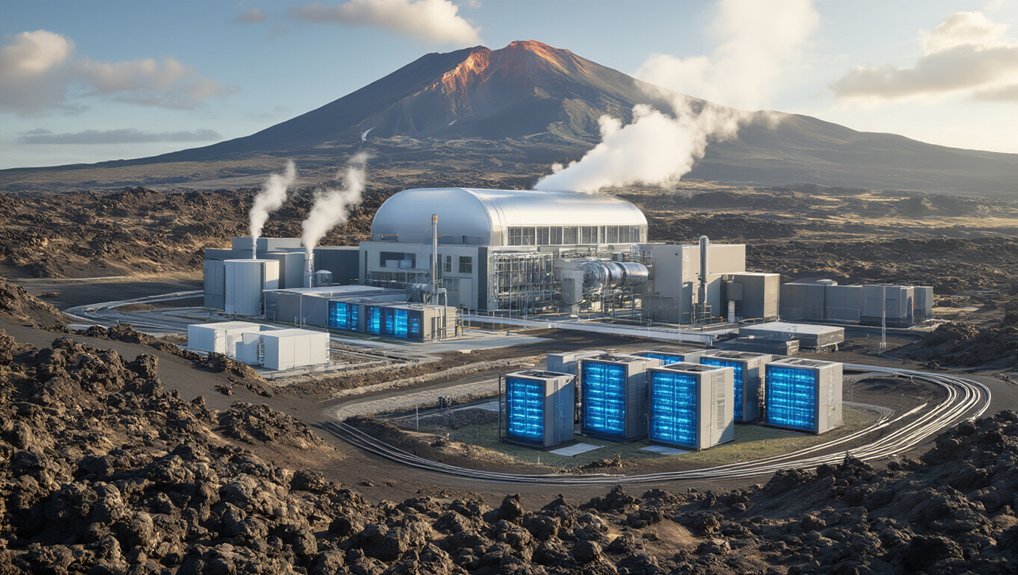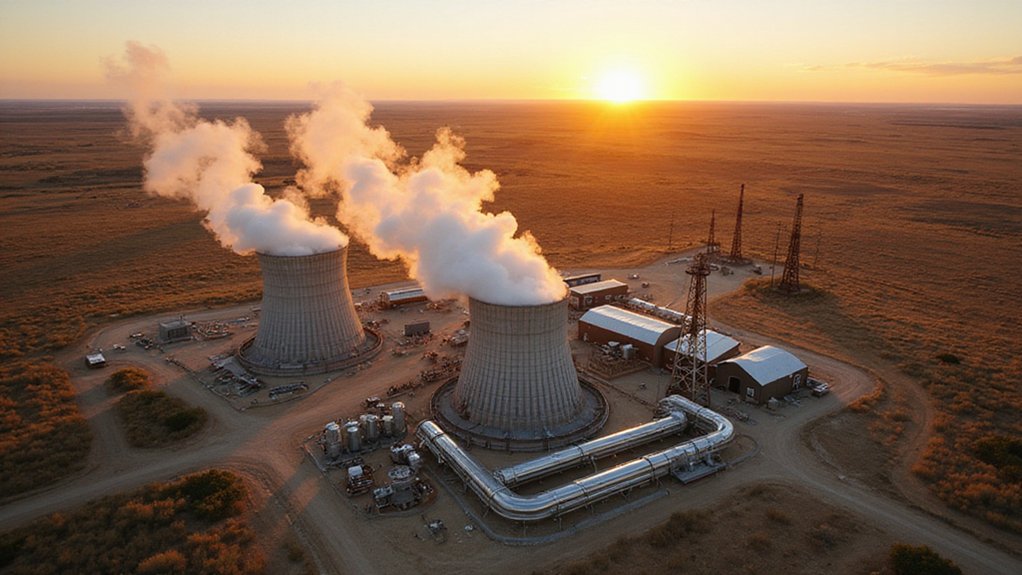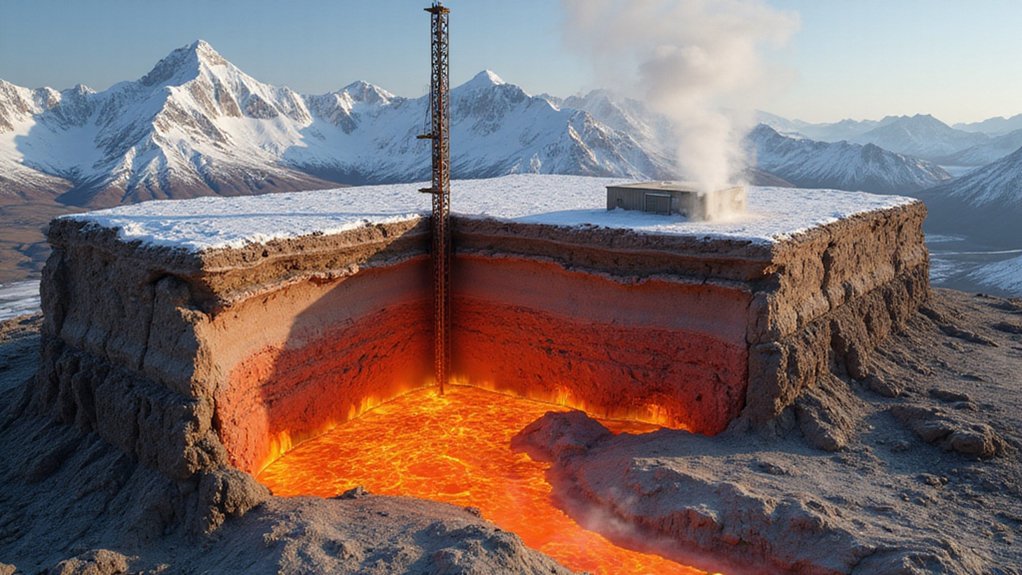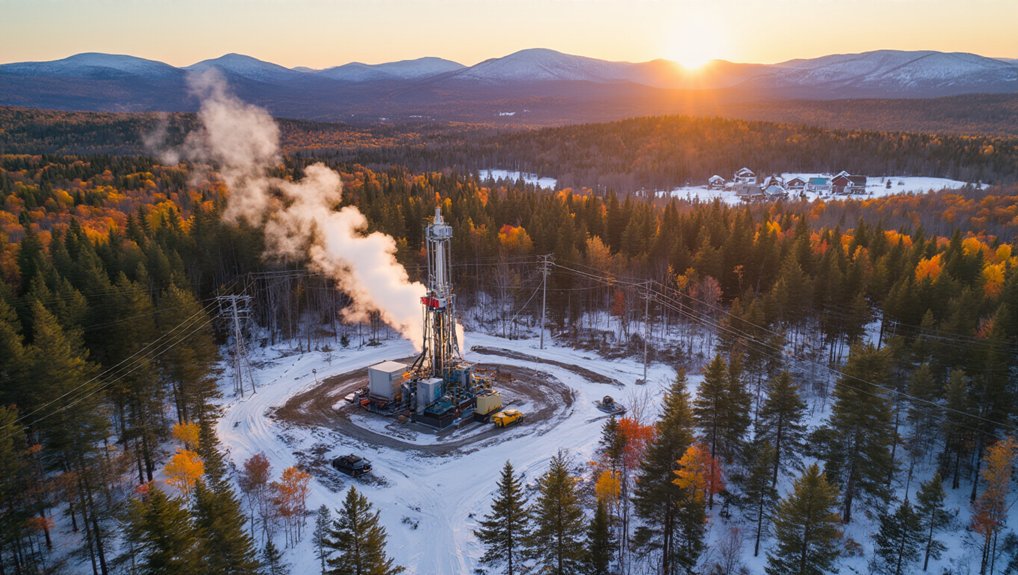While tech giants scramble to power their energy-hungry data centers with something greener than coal, geothermal energy is having its moment. The global geothermal power market hit 115.3 GWh in 2024 and should reach 149.4 GWh by 2033. Not exactly explosive growth at 2.88% annually, but here’s the thing: tech companies are desperate.
Data centers need power. Lots of it. All the time. Wind turbines stop spinning when the breeze dies. Solar panels become expensive paperweights at night. But geothermal? That underground heat keeps pumping 24/7, achieving over 75% utilization rates while wind manages less than 30% and solar a pathetic 15%.
The money’s starting to flow. Annual geothermal investment could hit $140 billion, surpassing current global investment in onshore wind. Total investment might reach $1 trillion by 2035 and $2.5 trillion by 2050. That’s real money, even for Silicon Valley standards.
Binary cycle technology, expected to grab 42% of the market, operates at lower temperatures and uses less water than traditional geothermal systems. Perfect for tech companies trying to polish their environmental halos while keeping their servers from melting. The technology produces minimal environmental impact, eliminates fossil fuel combustion, and reduces air pollution. Basically, it’s everything a PR department dreams about. Major players like ABB, Calpine, and Ormat Technologies are racing to dominate this sustainable power landscape.
North America holds the largest market share, convenient for U.S. tech giants. The market valuation of $7.83 billion in 2024 should balloon to $15.9 billion by 2037. Governments, utilities, and oil companies are all sniffing around for opportunities. When Big Oil starts investing in something green, you know there’s money to be made. Up to 80% of investment in geothermal projects leverages expertise directly from the oil and gas sector, making this transition surprisingly seamless. With an impressive 95% availability factor, geothermal provides the reliability that tech companies desperately need for continuous operations.
Next-generation geothermal technologies promise deep cost reductions. If the projections hold, geothermal could meet 15% of global electricity demand growth by 2050, potentially deploying 800 GW of capacity worldwide. That’s almost 6,000 terawatt-hours annually, equivalent to current U.S. and India electricity demand combined.
For tech companies facing backlash over their carbon footprints while simultaneously building AI systems that guzzle electricity like college students drink Red Bull, geothermal offers redemption. Reliable, clean, and increasingly cost-effective. What’s not to love?
References
- https://www.iea.org/reports/the-future-of-geothermal-energy/executive-summary
- https://www.globenewswire.com/news-release/2025/02/07/3022615/28124/en/Geothermal-Power-Market-Report-2025-2033-with-Profiles-of-Key-Players-ABB-Ansaldo-Energia-Calpine-Enel-First-Gen-Fuji-Electric-Halliburton-Ormat-Technologies-Toshiba-Yokogawa-Elect.html
- https://www.iea.org/data-and-statistics/charts/cumulative-investment-for-next-generation-geothermal-2025-2050
- https://www.researchnester.com/reports/geothermal-energy-market/3285
- https://www.thebusinessresearchcompany.com/report/geothermal-energy-global-market-report









